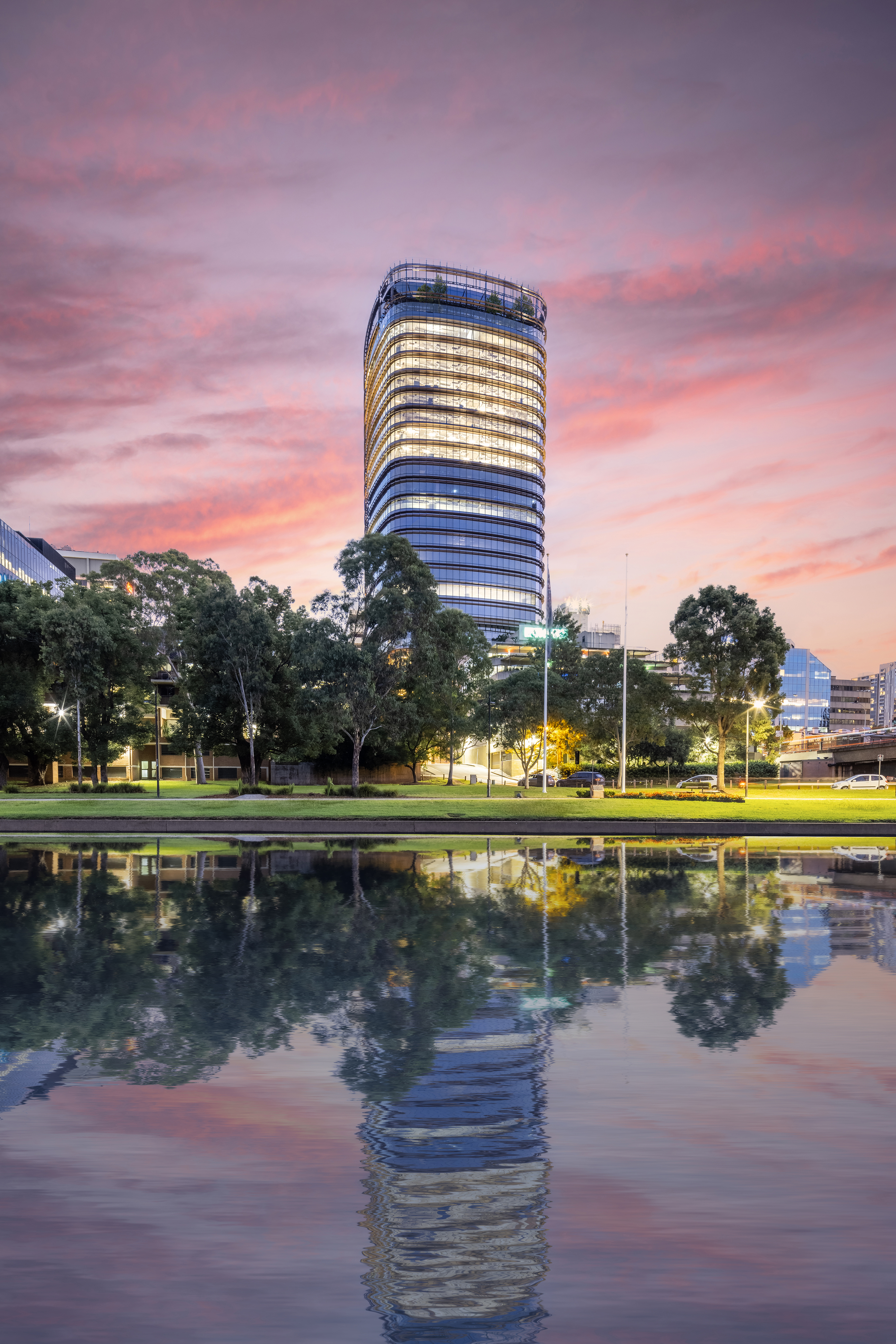Developing an office building is a privilege that leaves a lasting legacy, one that must remain intact as our environment changes over time. As a real estate company, we have the responsibility and opportunity to design and construct buildings that enable their occupants to thrive and which will operate sustainability and cost-effectively into the future.
As the effects of climate change become more evident, physical and transitional climate risks must be addressed during the development process to ensure buildings are resilient should these risks eventuate. We have incorporated resilience strategies into our 32 Smith office development in Parramatta to ensure its climate resilience.
Anticipating transitional risks
The transition to a low-carbon future will alter expectations of the real estate sector. Three transitional risks were identified as most relevant to 32 Smith and addressed in the building’s development.
- Tenant and investor expectations - In response to increasing tenant and investor expectations, 32 Smith will operate on a carbon neutral basis from its first day of operations. Onsite photovoltaic solar arrays and the procurement of renewable electricity will eliminate the largest source of inherent emissions from the building.
- Reliance on fossil fuels - Anticipating that fossil fuel dependency may increase future operating costs, 32 Smith is designed to accommodate an all-electric heating, ventilation and cooling (HVAC) system when the current gas boiler system reaches its end of life. Taking these steps now for a cost of approximately $50,000 during development future-proofs the building for these capital upgrades if needed in the future.
- Changing consumer behaviour - To ensure 32 Smith remains an attractive asset for both investors and tenants in the future, the car park has higher ceiling heights than required by building standards to enable these levels to be converted into additional office space if driving to work declines in the future. This added an additional $450,000 to the building’s development cost however provides significant flexibility regarding the use of floorspace within the building into the future.
Addressing physical risks
Two physical risks are particularly relevant for property development in Parramatta and were incorporated into the development of 32 Smith.
- Flood risk - As a riverside city the Parramatta CBD is exposed to flood risk. This risk could increase as the effects of climate change become more apparent, meaning that buildings may be affected by more serious flooding, more often over the building’s lifetime. For 32 Smith, we positioned the car park, key plant and equipment on and above ground level rather than in their typical basement location, avoiding site excavation. This includes one of the first elevated electrical substations in Parramatta, which is located on Level 1 above potential future flood levels. The costs of these measures were offset by the savings from avoiding site excavation works.
- Extreme heat - The Western Sydney region is exposed to heat conditions that are expected to become both more frequent and more extreme with climate change, and which would impact the building’s indoor comfort for our tenants.
In anticipation of these future heat events and to maximise indoor comfort today, 32 Smith’s design uses external shading features for each level. This maximises shade while providing good levels of indoor sunlight. The façade also incorporates specially coated double glazing that reflects energy from sunlight to reduce heat while maintaining good visibility outwards for building occupants.
By considering these transitional and physical climate-related risks during the building’s design, GPT has ensured that 32 Smith is efficient today and can remain both efficient and resilient as the climate changes in the future.
